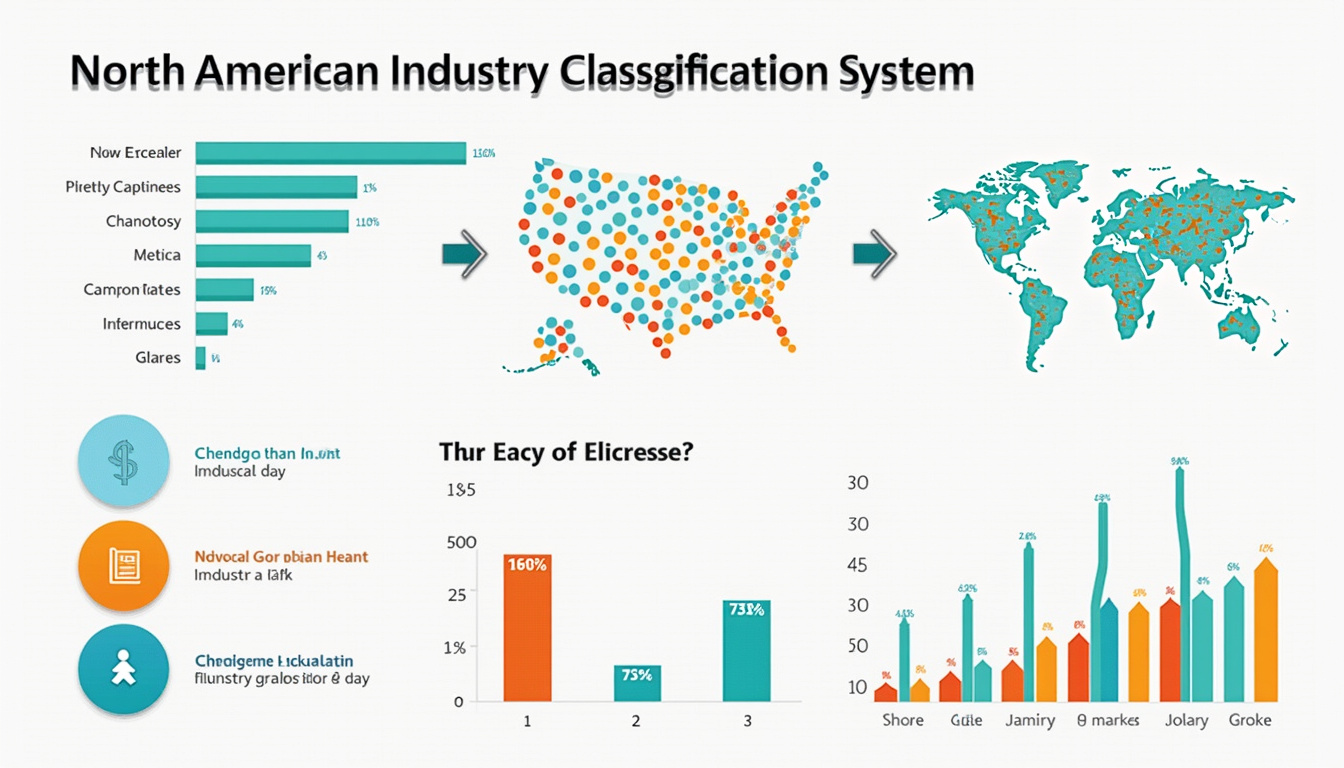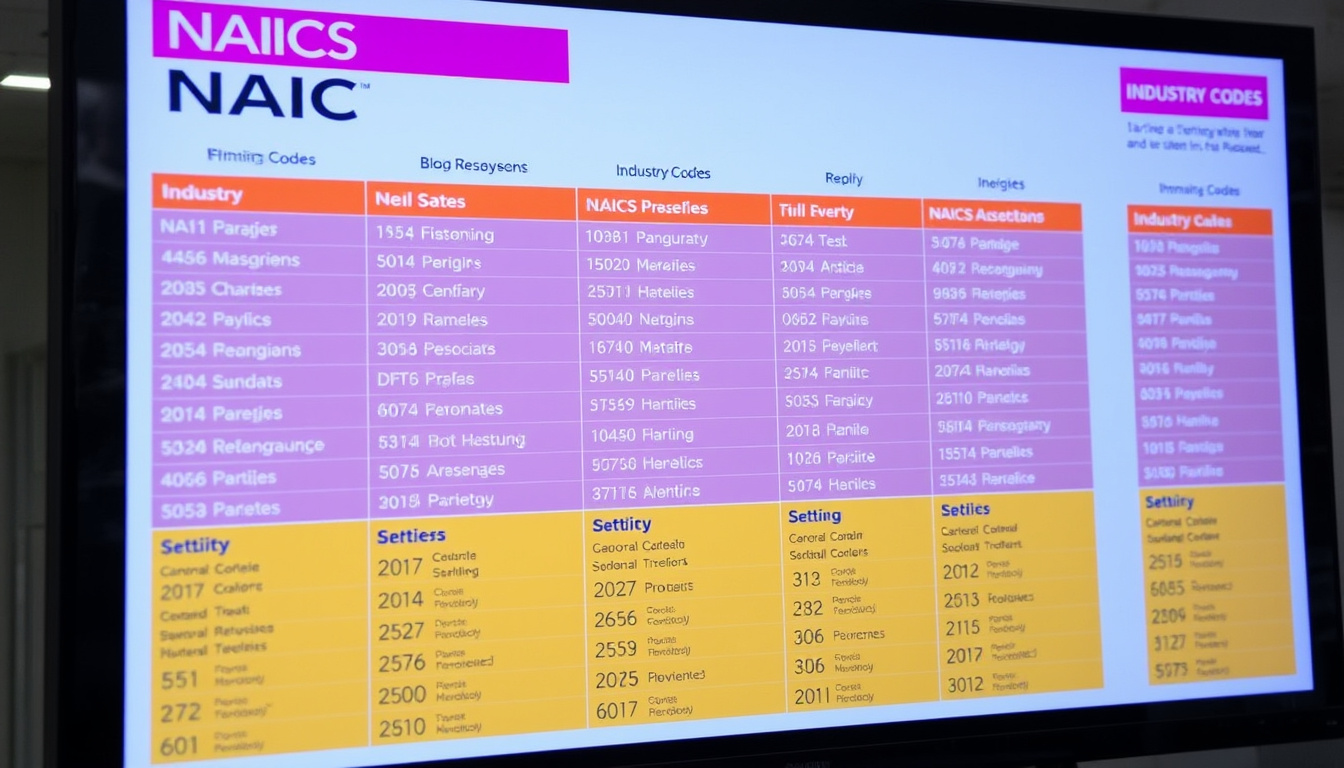If you are starting a new business or need to clarify your existing business activities, performing a NAICS code lookup is an essential step. The North American Industry Classification System (NAICS) helps classify businesses by their primary activities, which is vital for taxation, regulatory compliance, and market research. This comprehensive guide will walk you through everything you need to know about finding your NAICS classification quickly and accurately.
What Is a NAICS Code and Why Is It Important?
A NAICS code is a six-digit numeric code that categorizes business establishments based on the type of economic activity they engage in. Established jointly by the U.S., Canada, and Mexico, NAICS facilitates:
- Statistical analysis of the economy
- Business tax filing and reporting
- Eligibility determination for government contracts
- Benchmarking and competitive analysis
Understanding your NAICS code ensures you comply with industry regulations and connects you with industry-specific resources. Whether you operate a small retail store, a tech startup, or a manufacturing plant, knowing your proper NAICS code is crucial.
How to Conduct a NAICS Code Lookup
Performing a NAICS code lookup can be simple if you know where to search and how to match your business descriptions to the right classification. Here’s how you can proceed:
1. Use the Official NAICS Websites
The U.S. Census Bureau offers an official search tool for NAICS code lookup at their website. You can enter keywords related to your business activities, and the system will suggest possible NAICS codes based on the description. Visit https://www.census.gov/naics/ to access this tool.
2. Utilize Instant Classification Tools like Classifast.com
For a faster and more versatile approach, services such as Classifast.com offer instant classification by analyzing any text input you provide. Classifast can quickly identify NAICS codes by processing detailed business descriptions and matching them with international product and service standards, including NAICS, UNSPSC, ISIC, ETIM, and HS codes. This tool is invaluable if your business activities cover multiple sectors or if you want to explore classification alternatives.
3. Reference Industry Code Manuals
NAICS classification manuals provide detailed descriptions of each code, helping you understand the nuances behind each classification. These manuals are downloadable from the Census Bureau website and support manual lookup if you prefer a deep dive into industry sectors.
4. Consult with Industry or Business Advisors
Professional guidance from accountants, business consultants, or industry trade groups can help clarify your correct NAICS code, particularly if your operations are complex or diversified. Incorrect classification can cause issues in reporting and contract bidding.
Tips for Accurate NAICS Code Lookup
To ensure you choose the most accurate NAICS code, consider the following tips:
- Describe your primary business activity in clear terms.
- Include secondary activities if relevant, as some businesses fall into multiple codes.
- Use tools like Classifast.com for automated, error-reduced classification.
- Double-check codes against official resources such as the U.S. Census Bureau.
- Update your NAICS code if your business operations change significantly.
Benefits of Knowing Your NAICS Code
Having a precise NAICS code is beneficial across various dimensions of running a business:
- Tax Reporting: Helps correctly file federal and state tax forms.
- Government Contracting: Enables qualification for set-aside contracts.
- Market Research: Provides access to tailored industry reports and statistics.
- Business Loans and Grants: Many financing options require NAICS identification.
- Competitive Benchmarking: Understand how you rank against similar businesses.
Common NAICS Code Categories
To get an idea of the diversity of codes, here are some broad categories:
- Agriculture, Forestry, Fishing, and Hunting
- Mining, Quarrying, and Oil and Gas Extraction
- Manufacturing
- Wholesale Trade
- Retail Trade
- Information Technology and Services
- Finance and Insurance
- Professional, Scientific, and Technical Services
- Health Care and Social Assistance
- Educational Services
Each category is further divided into detailed subcategories, so a thorough lookup is essential for accuracy.
FAQ: NAICS Code Lookup
Q1: How can I perform a NAICS code lookup using my business description?
A1: Use online search tools like the U.S. Census NAICS lookup or the instant classification service at Classifast.com by providing your detailed business description to get the most accurate NAICS code matches.
Q2: Can one business have multiple NAICS codes?
A2: Yes, businesses operating across several sectors may have primary and secondary NAICS codes. It’s important to identify the primary code based on your main economic activity.
Q3: Why is it important to keep my NAICS code updated?
A3: Accurate and up-to-date NAICS codes ensure compliance with regulations, correct tax filings, and eligibility for industry-specific programs or contracts.
Leveraging Advanced Classification Tools: Classifast.com
When you want a modern, simplified way to perform your NAICS code lookup, Classifast.com stands out as an excellent resource. It offers:
- Instant classification of any text input describing your business
- Access to multiple classification standards such as NAICS, UNSPSC, ISIC, ETIM, and HS
- User-friendly interface suited for business owners, consultants, and government contractors
- Increased accuracy and time savings compared to manual lookups
Using Classifast.com alongside traditional tools can significantly reduce errors in classification, making your business more compliant and competitive.
Additional Resources for NAICS Code Lookup
For the most reliable official information, consider the following:
- U.S. Census Bureau NAICS page: https://www.census.gov/naics/
- North American Industry Classification System Manual
- Small Business Administration resources
- Classifast.com for multi-standard classification
For a broader perspective on business classification systems and their importance, the Small Business Administration provides excellent guidance that can complement your NAICS lookup process (source).
Final Thoughts: Simplify Your NAICS Code Lookup Today
In today’s data-driven business world, knowing your correct NAICS code is more than just a bureaucratic formality—it’s a strategic advantage. Whether you want to optimize tax processes, participate in government programs, or conduct market analysis, an accurate NAICS code lookup is fundamental.
Save yourself time and avoid costly misclassifications by leveraging modern tools like Classifast.com. Its effortless text classification system gets you the right NAICS code and other essential industry standards instantly.
Don’t wait—take control of your business classification now. Visit Classifast.com and discover the easiest way to find your business’s NAICS code today!

















